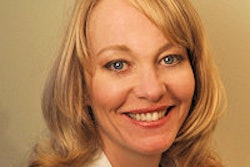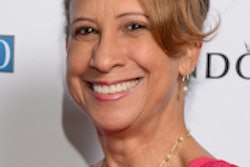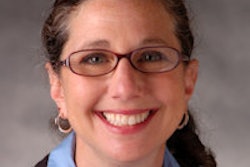
Part I of this two-part series looked at the challenges women dentists face with regard to misconceptions about their ability to juggle career, family, and life.
While women may have come a long way in the last 40 years, some challenges remain on the professional front. But this scenario is changing, thanks to a growing number of professional programs aimed at helping women step into leadership roles, and dentistry is at the forefront of this trend.
According to data from the American Dental Education Association (ADEA), almost half of all U.S. dental school students are now women; the percentage of women in active private practice in the U.S. has increased to approximately 20%; and as of 2008, women accounted for 24% of deans and interim deans of U.S. dental schools. In addition, Kathleen O'Loughlin, D.M.D., M.P.H., is the current executive director of the ADA -- the first time a woman has held this position. Likewise, in 2008 Paula Jones, D.D.S., became the first woman president of the Academy of General Dentistry.
— Donna Grant-Mills, D.D.S., R.D.H.,
M.Ed., Howard University College
of Dentistry
One reason for this sea change, according to Donna Grant-Mills, D.D.S., R.D.H., M.Ed., chairperson of the department of dental hygiene at the Howard University College of Dentistry, is the 1985 decision by ADEA's leaders to start promoting the advancement of women in dental education. In addition, a number of professional organizations and programs have sprung up around the U.S. to support women interested in making their way as dental professionals and dental educators.
ELAM program
One such program is the Hedwig van Ameringen Executive Leadership in Academic Medicine (ELAM) Program for Women, established in 1995 at the Drexel University College of Medicine. Since the program's founding, 569 women have participated, including 38 academic dental faculty members. Among them are Teresa Dolan, D.D.S., M.P.H., and five of the 12 women currently serving as deans of U.S. dental schools. Dr. Dolan became dean of the University of Florida College of Dentistry in 2003 just before joining the ELAM program.
"It's an example of a formal leadership program that is focused on women, and I think there's value to that," Dr. Dolan said. "I think women still appreciate the fellowship and support that come with leadership training or social networking."
In addition to the five women dental school deans, graduates of the ELAM program include five of the 15 current women medical school deans and two of the 12 women deans of U.S. public health schools.
To be eligible to participate in the ELAM program, the women must be nominated by a dean and supply recommendation letters from two senior colleagues.
"We realize that in order for women to advance their careers, some of them who have been working basically in the trenches need to have additional preparation," said Rosalyn Richman, director of ELAM Alumnae Relations. "So that's what this program provides. And not only the skills and knowledge, but also increasing the participants' network and community of peers."
Connie Drisko, D.D.S., dean of the Medical College of Georgia School of Dentistry, is another ELAM grad.
"In the program, I learned budgeting and business management, conflict management, and also how to deal with personnel and leadership," she told DrBicuspid.com. "The more women there are as leaders and the better network we have, the more likely you are to find more women on campus [as faculty members]. And ELAM is certainly a wonderful space for that."
ADEA residency program
A program designed for junior faculty is the ADEA/Johnson & Johnson Healthcare Products Enid A. Neidle Scholar-in-Residence Program for Women. It was founded by Jeanne Sinkford, D.D.S., Ph.D., the first woman dean of a U.S. dental school. She headed the Howard University College of Dentistry from 1975 to 1991 and started the program after stepping down from the deanship.
"At the time we started the program, the enrollment of women was increasing in dental schools, and we were beginning to see them become career academicians, but we weren't seeing them moving up into the roles where they were the leaders or the decision-makers," Dr. Sinkford said. "After completing the Enid Neidle program, the women have developed skills in research, writing, and communication. They collaborate and network effectively and develop their self-esteem."
One woman junior faculty member is selected to enter the program each year, staying for a total of three months at the ADEA offices in Washington, DC. During that time, they continue to receive their salary from their home institutions. Over the three-month program, the women design and complete a research project, gain experience in working with legislators concerning issues related to dental education, and develop other skills related to career advancement.
Sixteen women have completed the Enid Neidle program. They have become a university vice president, department chairs, and program directors, Dr. Sinkford noted, and they have a high retention rate at their sponsoring institutions.
Dr. Grant-Mills completed the program in 2006 and is one of two African Americans to have done so to date. Dr. Grant-Mills was an assistant professor of clinical dentistry at the Howard University College of Dentistry before entering the program. After completing the program, she was promoted to associate professor and chairperson of the department of dental hygiene at the college.
"The program has been one of the major highlights of my career as a dental educator," Dr. Grant-Mills said. "As junior faculty, I looked for programs that would expose me to the mentorship, the training, and the direction that I definitely needed to navigate the waters of academia. The Enid Neidle fellowship placed me on the path toward achieving my goals of becoming a director, a chair, and some day a dean of a dental school."
Leadership Institute
ADEA offers another program, the Leadership Institute, to help women and men senior faculty move into higher positions. Over a one-year period, the enrollees spend 12 days in intensive sessions. These focus on areas such as team building; strategies for leading change, developing public policy, and negotiation; building a research program; and other aspects of administration. The beginning and the end of the year are spent at the ADEA annual meeting in sessions designed for enrollees and alumnae.
"We've had 13 people who completed the program move to associate or assistant dean positions, and we've had 17 grads move to chair positions," noted Karl Haden, Ph.D., president of the Academy for Academic Leadership. "And we've had over 20 grads move to some other administrative position such as section director or program chief."
Dr. Haden created the program in 2000 while an ADEA staff member; he has since formed the academy to help run the program and other leadership initiatives.
Cecile Feldman, D.M.D., M.B.A., dean of the New Jersey Dental School at the University of Medicine and Dentistry of New Jersey, has participated in the program.
"I was honored to have been accepted as part of the inaugural class. My expectations of what I would get out of the institute were far exceeded," Dr. Feldman said. "At the time, I didn't realize the opportunities which would open up as a result of getting to know so many outstanding people. I also gained insight into my own leadership style and the impact it has working with individuals who have very different ways of approaching problems and situations."
Clearly, the networks formed by participants in these programs spread out in concentric circles. They form a support system that buoys up more women as they work their way into the center of what used to be an exclusively male domain.
Copyright © 2009 DrBicuspid.com



















